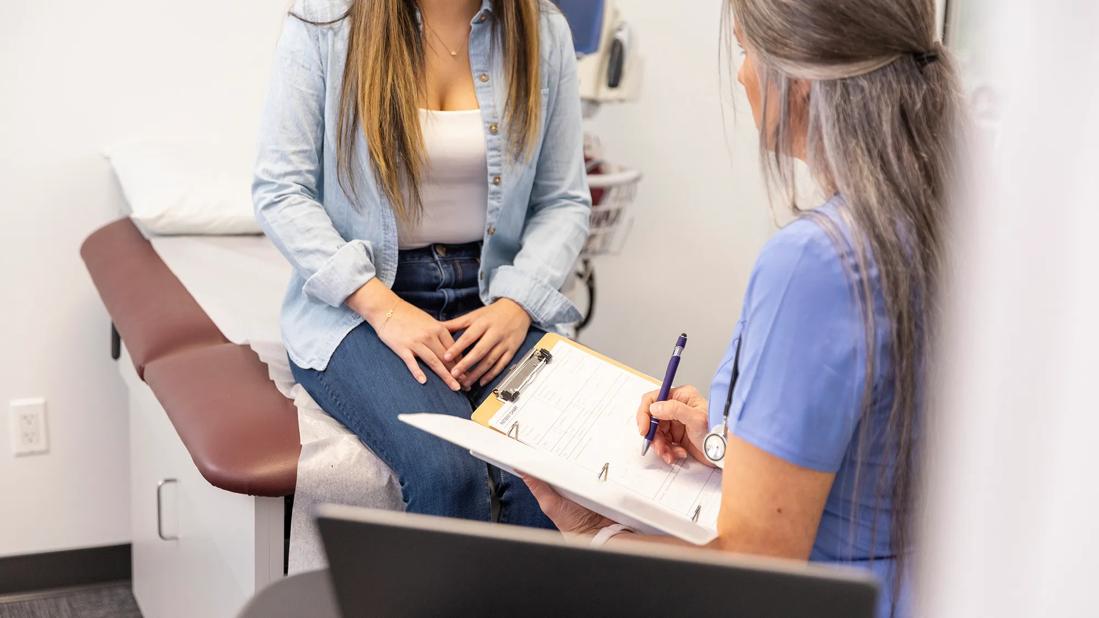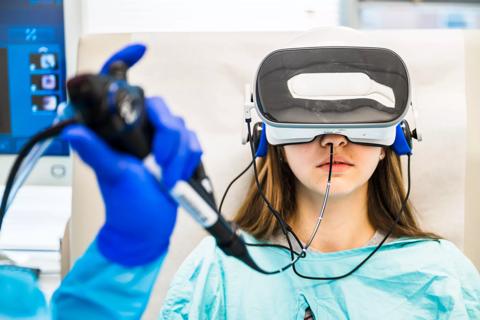Review article offers guide for performing an in-office visit

Medical management of adolescent gynecology in a primary care pediatric setting is an important form of healthcare access, and yet there is still ambiguity about best practices for delivering care to these patients, particularly in the context of sexual and reproductive health.
Advertisement
Cleveland Clinic is a non-profit academic medical center. Advertising on our site helps support our mission. We do not endorse non-Cleveland Clinic products or services. Policy
“Gaps in providing this type of care can have devastating consequences on patients’ reproductive health journeys. We want pediatricians to know what they can do legally and in good conscience to keep their patients safe and healthy,” says Ellen Rome, MD, MPH, who leads the Center for Adolescent Medicine at Cleveland Clinic Children’s.
For this reason, Dr. Rome, an internationally recognized expert in adolescent medicine, was invited by the American Academy of Pediatrics to author an article for Pediatrics in Review. Dr. Rome served as President of both the North American Society for Pediatric and Adolescent Gynecology (NASPAG) and its 7,500 member, international counterpart, the Federatione Internationale de Gynecologie Infantile et Juvenile (FIGIJ). She was also among the first physicians in the country to become board-certified in the subspecialty nearly 30 years ago.
Pediatricians who are board-certified in adolescent medicine have been trained in all medical aspects of pediatric and adolescent gynecology (PAG). However, Dr. Rome emphasizes, “There is an awful lot a primary care provider can do without a speculum.” As such, the article covers everything from best practices for obtaining a patient’s history and conducting a physical exam to guidelines on testing, information on consent and confidentiality, counseling patients on contraceptives and menstrual management, navigating the patient-parent dynamic and more.
“At a basic level, we want every provider caring for an adolescent from tween to young adult years to be comfortable asking the HEADDSS questions with respect to their reproductive health,” says Dr. Rome. Creating a comfortable, patient-centered environment by approaching the interview with nonjudgmental, open-ended questions and genuine curiosity is essential for building trust and honest communication.
Advertisement
Providers should also be mindful of navigating clinical encounters where the patient is accompanied by the parent or guardian and ensuring that both patient and parent feels empowered to express their concerns. Once the boundaries of confidentially are discussed, time without the parent or guardian present can lead to meaningful disclosure and discussion about sensitive topics. The clinician remains a bridge to help open lines of communication and reinforce healthy decision-making strategies.
Dr. Rome notes that motivational interviewing can help elicit responses that allow physicians to provide education while also partnering with the patient on the care that’s relevant to them.
When it comes to the gynecologic exam and adolescent patients, the AAP recommends following patient preference to guide office practices about utilizing a chaperone; this person can be a friend or family member if that is what the patient desires. Dr. Rome notes that some states require presence of a chaperone during these visits, and if one is not present, the reason should be documented.
In this patient population, the gynecologic exam is symptom- and history-driven, Dr. Rome explains.
Providers should be comfortable assessing and documenting Tanner staging of breasts and pubic hair every year for patients ages 7 to 16 to monitor normal pubertal development. “Periods should have started two years after the first breast bud, which happens at Tanner stage 2. So, if by Tanner stage 4, the patient hasn’t started their period, a pediatrician needs to know to start working up why those periods are delayed and consider a referral to the adolescent medicine team,” she says. The consequences of delayed intervention can be devastating, putting the patient at risk for more serious pathologies.
Advertisement
Approaches vary based on patient-reported symptoms, and the pace is dictated by “the urgency of the complaint,” the authors note. The fundamentals of the physical examination are described in the article, which include: head-to-toe examination for musculoskeletal pain, breast examination and external genital examination. A bimanual or speculum examination may be relevant in scenarios where identifying anatomy is important.
Pelvic examination is only necessary in instances where the patient reports lower abdominal pain. If they are sexually active and pelvic inflammatory disease is suspected, a bimanual exam — with or without a speculum — may be warranted. If the patient is not sexually active, a rectoabdominal and/or bimanual exams may be performed to assess uterine characteristics and abnormalities.
In patients who are sexually active, the AAP recommends screening annually for Chlamydia trachomatis and Neisseria gonorrhoeae, while other STI testing should be largely guided by symptoms.
Patient history and symptoms drive additional in-office testing, and the article addresses indications for such including suspected pregnancy, urinary or metabolic disturbances, uterine or vaginal anomalies, pelvic inflammatory disease and more.
Adolescents, like any patient, are entitled to patient-provider confidentially. Creating an environment of trust is essential for providers to obtain an accurate history and, therefore, effectively manage care and counsel patients, particularly during a time when they may be engaging in high-risk behaviors.
Advertisement
Dr. Rome reminds providers about the importance of understanding confidentially in the context of testing results and billing. “For example, in all 50 states, a kid has the right to get STI testing and treatment confidentially.” However, electronic health records and billing practices are often nonconfidential, Dr. Rome explains, which can complicate this. Therefore, she advocates for implementing an office practice of communicating results directly to the patient and also developing language to use with parents and guardians that normalizes the need for guideline-recommended testing.
“Basic knowledge of contraception is an imperative for providing adequate reproductive health. Our rates of sexual activity are the same as those of Europe and Scandinavia, for example, and yet the U.S. has exponentially higher rates of teen pregnancy,” says Dr. Rome.
Data show that abstinence-only counseling does not work — although combining it with contraceptive counseling is a viable strategy. Similarly, she also advocates for ongoing, developmentally appropriate sexual education for children and teens, a strategy that has been adopted in countries like Sweden and Norway.
“We want to work with parents to feel prepared to have these conversations, too, and be able to understand other health benefits of contraceptives, like birth control pills or long-acting reversible contraceptives with respect to menstrual management.”
“This is a time when a patient should be developing increasing awareness and responsibility for their own health. Regardless of where a patient is on their reproductive journey, it’s important to acknowledge that education about sexual health ensures that patients have all the tools in their toolbox to make healthy choices now and into the future,” says Dr. Rome.
Advertisement
“Equally important,” she concludes, “is supporting primary care pediatricians as they navigate the sensitivities of sexual and reproductive health in the context of the adolescent-parent dynamic in a way that promotes the young person’s wellness across their lifespan.”
Advertisement

Tapping into motivational interviewing to guide behavioral change

Specialized clinic provides comprehensive care for pediatric patients with a high-risk history

Complex disease requires a comprehensive approach

Diet has a profound impact on how the intestine functions

Research aims to understand factors to help standardize practices

Specialists in the growing specialty are well-positioned to foster seamless, high-value care

5 things a child psychiatrist wishes all pediatricians would do

Programs bring age- and size-appropriate technology to children